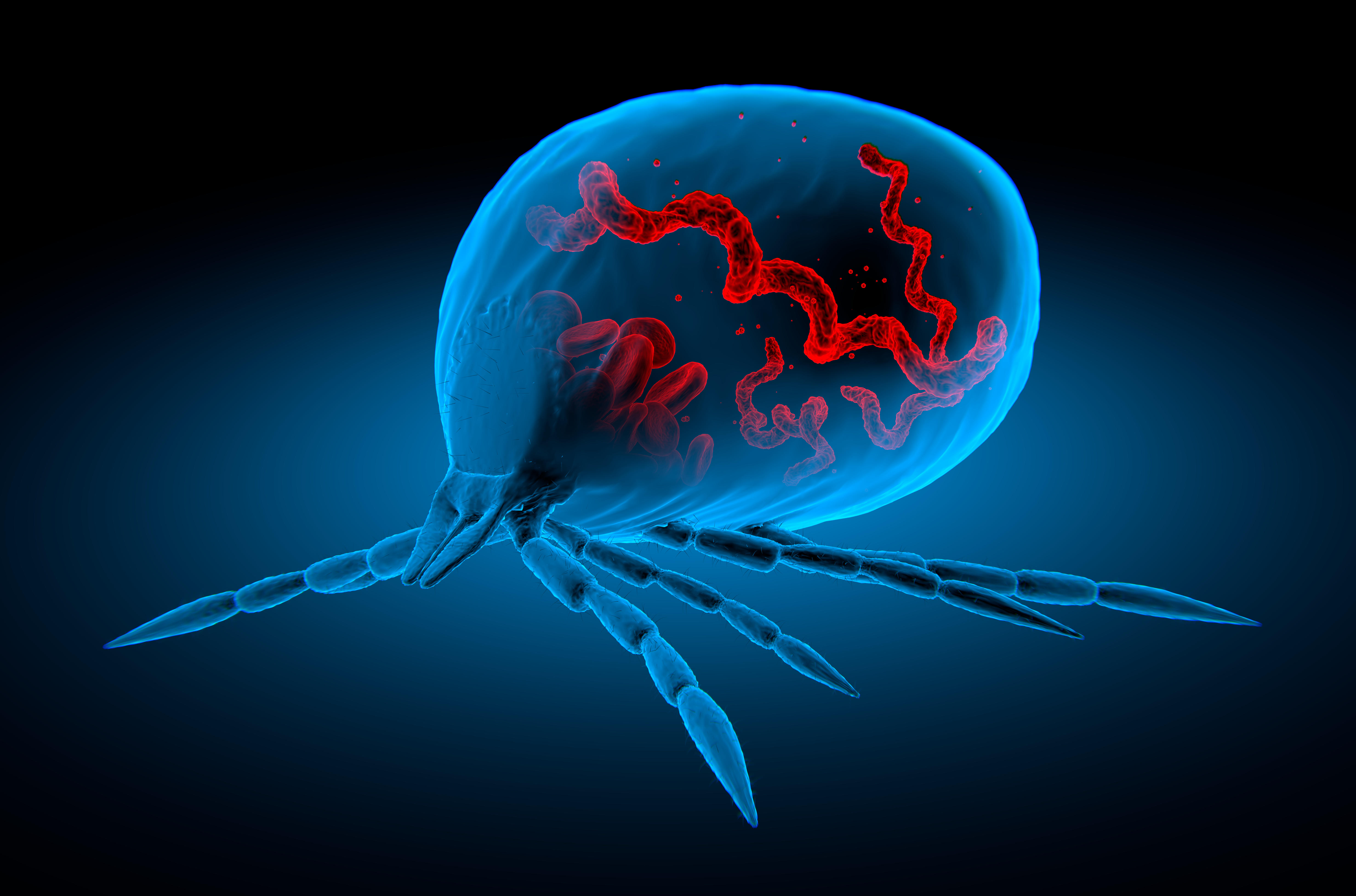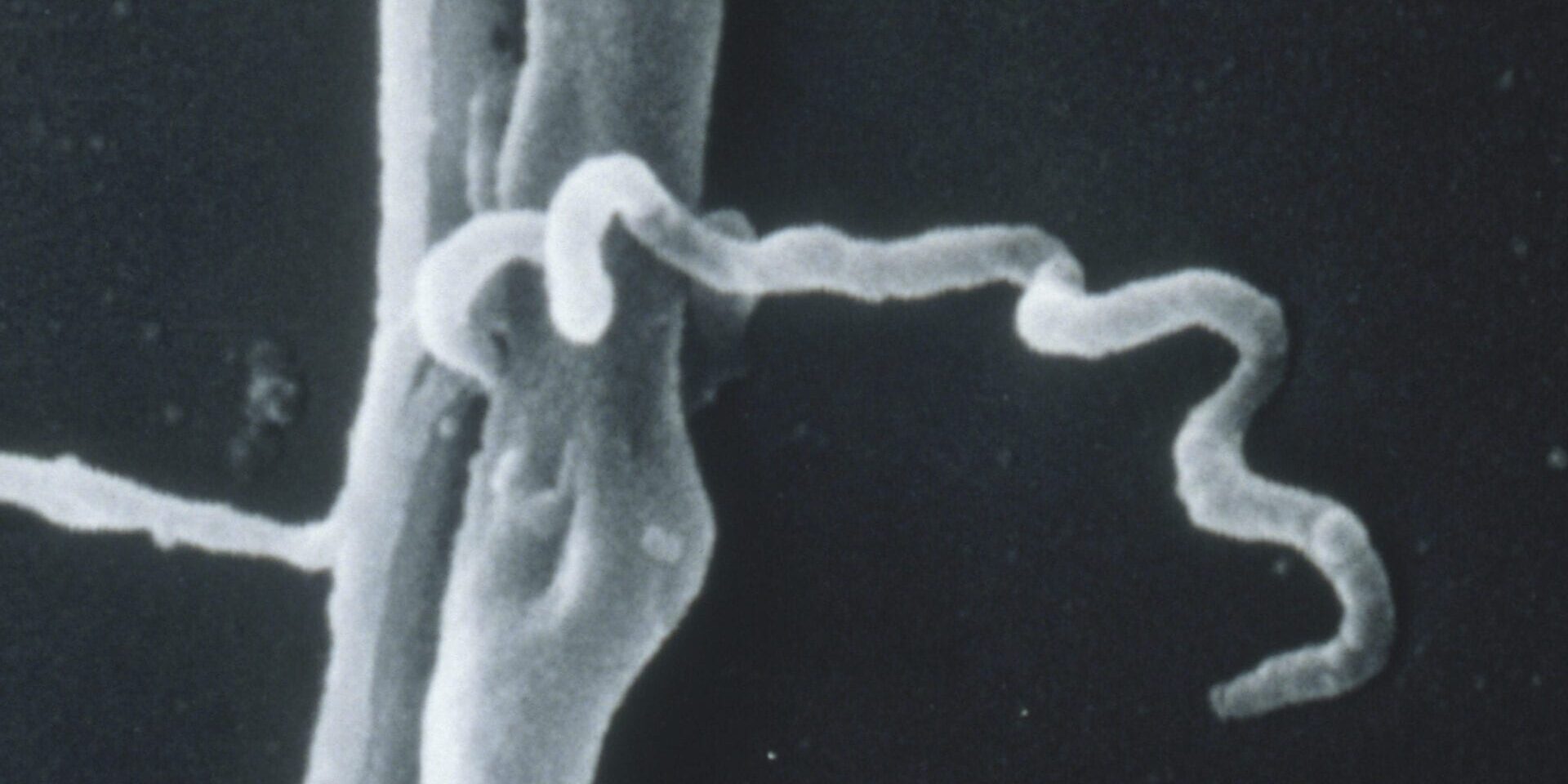FACTS ABOUT LYME
Knowing The Facts is Vital
Lyme disease is a bacterial vector-borne infectious disease with protean manifestations (tending or able to change frequently or easily), including dermatologic, rheumatologic, neurologic, & cardiac abnormalities. Lyme disease is prevalent across the United States & throughout the world; Lyme disease is in over 80 countries, worldwide. There are an estimated 476,000 new cases of Lyme disease every year in the United States, alone.
There are stages to Lyme disease, just as with many other diseases. Late-stage is far more debilitating & dangerous than early-stage Lyme disease. Many people are diagnosed late-stage & have had clinical symptoms for years before properly being diagnosed.

TICK DISEASE CASES IN YOUR ZIP CODE
Interactive Map from IDEXX Labs
Dogs get tested more regularly than humans for Lyme disease. Some researchers argue that the prevalence of Lyme disease can be more accurately inferred from the distribution of canine cases rather than from the human case maps compiled by the CDC. Here is an interactive map for Ehrlichia, Lyme disease, Heartworm, & Anaplasma cases reported to IDEXX Testing Labs from veterinary offices who test for these diseases across the United States. This map shows that Lyme disease is indeed in every part of the United States. Scroll down to the bottom of the map to change the disease results.
TREATMENT INFORMATION
Drug Types Matter
Doxycycline alone may not treat you if you have the bacteria disseminated in your body. This type of drug acts effectively as a sort of a birth control to help sterilize the bacterial colony. It does not kill the bacteria. Let us explain: Tetracyclines inhibit a lot of enzyme reactions essential for the vital processes of bacterial cells. The most sensitive biochemical reaction that is inhibited is the synthesis of proteins. Tetracycline works by binding specifically to the 30S ribosome of the bacteria, preventing attachment of the aminoacyl tRNA to the RNA-ribosome complex. It simultaneously inhibits other steps of the protein biosynthesis. Tetracycline can also alter the cytoplasmic membrane & this in turn causes leakage of nucleotides & other compounds out of the cell. This does not directly kill the bacteria but instead inhibit it. A cephalosporin may also be needed to attack the bacterial protein wall & kill the bacteria. Cephalosporins are a type of antibiotic closely related to the penicillins. They are bactericidal, with the same MOA as other beta-lactams, & disrupt synthesis of the peptidoglycan layer of bacterial cell walls, resulting in lysis & death of the cell.
The bacteria which causes Lyme disease is evolved. It changes shape & likes to penetrate into joints, bones & muscle tissue, & nerve fibers. This is how it can affect all organs, joints, & systems. It is not a bacteria confined to serum. This is one reason why tests may have trouble getting enough antibodies in each serum sample to trigger a positive test.
TESTING INFORMATION
Antibody Tests are Unreliable
You can have a negative Lyme disease test & still be infected. There are noted high false-negative rates from the antibody tests. You can also have a Lyme disease positive CSF (cerebral spinal fluid) test, & still have negative Lyme disease serum (blood) tests.
The bacteria which causes Lyme disease has a long life-cycle & evades treatment. This is why a one-month supply of a tetracycline antibiotic may not be enough to treat your disease if the disease has already disseminated.

LYME DISEASE IS DANGEROUS

Species & Strains Matter
Lyme disease is a spirochete bacteria & causes the same type of damage to the host body as Syphilis, another spirochete bacteria. The bacteria produce a persistent infection & can only be killed with antibiotics. Only a few strains of Lyme disease produce a self-limiting infection. In the vast majority of cases, a patient needs antibiotic treatment to get rid of Lyme disease.
The bacteria that causes Lyme disease has multiple species, each with multiple subspecies/strains, in different regions of the world that infect humans. There are estimated to be approximately 300 strains, globally, of the bacteria which causes Lyme disease. It has been shown that multiple species of the bacteria & more than 20 strains are able to infect humans in the U.S.A, alone. The genetic diversity of the bacteria may contribute to its ability to evade the immune system & resist antibiotic therapy, leading to chronic infection. In addition, research has shown that different strains preferentially survive in particular tissues - they thrive & are better adapted in that particular area of the host body.

Some People Have Severe Symptoms
Lyme disease has very serious clinical symptoms that mimic other very serious diseases. Because of this, Lyme disease gets misdiagnosed as MS, Parkinson's, Lupus, ALS, Alzheimer's, RA, CFS, Fibromyalgia, IBS, psychiatric disorders, & more. There can be confusion in diagnosing MS & Lyme disease since both can exhibit white matter lesions in the brain as shown on MRIs. The disease can cause postponed neurological signs of serious illness, like those seen in MS such as visual disturbances, peripheral neuropathy, cognitive defects, & fatigue. The clinical distinction between these two diseases (MS & LD), even with the use of magnetic resonance imaging (MRI) can be very difficult. Lyme disease spirochetes have been found in the brain tissue of Alzheimer’s disease patients & it is hypothesized that, in that manner, Alzheimer's may be a consequence of infectious disease.
Genetics May Play A Role
Some research suggests that patients who do not get better from Lyme disease may have a genetic factor responsible for their symptoms persisting. More clinical research is currently being done on this. In addition, patients may have gotten rid of Lyme disease, yet are undiagnosed for what is causing them to continue to have poor health (secondary disease to Lyme disease, newly triggered autoimmune disease, or possibly other tick-borne diseases that have never been diagnosed, for example).
CONTROVERSY
Schism in the Medical Community
There is controversy in the medical community, & some doctors dismiss patients who have been seeking answers for a long period of time with very real clinical symptoms & deterioration. As a result of this, patients spend a lot of money on treatments without any scientific proof or basis that they work because they become desperate to feel healthy. We highly discourage pursuing these paths of treatment. These treatments can be dangerous to the body at worst &, at best, be safe but create a huge financial strain without ever making the patient better. They may create a placebo effect without ever treating the real infection or underlying issue. They also result in a lot of poor anecdotal information about Lyme disease as patients mistake correlation for causation, erroneously linking the particular treatment they are on to cyclical variation in their symptoms.
There is always an answer to what is going on. We encourage finding medical specialists who will thoroughly investigate & properly diagnose the patient with any possible overlapping & previously undiagnosed diseases. If a patient does not get correctly diagnosed with other diseases they may have, they will never get proper treatment & never get better. Seeking proper care & treatment from a medical specialist in each field of specialty with which a patient has a problem is vital. Both the patient & the doctor must not dismiss Lyme disease, or overlook other diseases that are causing the continued clinical deterioration.
